We’re committed to designing microscopes that help make your world healthier and safer. Now, thanks to new research conducted during long-duration space missions, our confocal laser scanning microscope technology is helping scientists study things beyond our world.
One example is a NASA research experiment studying bacterial biofilms and their impact on space crew health and system safety. Read on to learn more about the spaceflight experiment and how confocal microscopy helped it take off.
Exploring Biofilms Found on Earth and in Space
Surface-adherent bacterial communities, known as biofilms, are found all around us. Common examples of biofilms on Earth include the slime found on river rocks, the “gunk” in your sink drain, or the plaque that forms on our teeth.
But can bacteria attach to surfaces in low gravity?
In 1998, Texas State Professor Robert “Bob” McLean set out to answer that question while helping a group of eighth-grade students with a science fair project. Their Microgravity Biofilm Experiment took off on the STS-95 space shuttle, launching from the Kennedy Space Center in Florida on October 29, 1998.
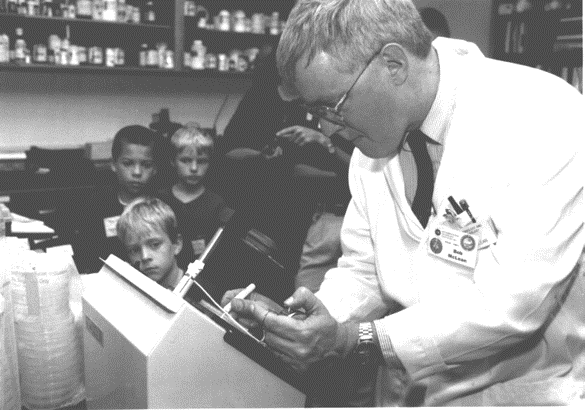
Bob McLean and his two sons collect results for the STS-95 Microgravity Biofilm Experiment
Their work led to the first publication showing that bacteria can form biofilms in microgravity, a discovery that caught the attention of the National Aeronautics and Space Administration (NASA).
The Bacterial Adhesion and Corrosion (BAC) Spaceflight Experiment
As astronauts begin to explore far-away destinations through long-term spaceflight, a priority for NASA is to keep them safe and healthy throughout their missions. With concerns about biofilm formation on spacecraft, they turned to Bob to perform new research.
The Bacterial Adhesion and Corrosion (BAC) spaceflight experiment launched on SpaceX CRS-21 in December 2020, with Bob as the principal investigator and Cheryl A. Nickerson from Arizona State University as the co-principal investigator. Other team members include Starla Thornhill from Texas State, Jenn Barilla, Jiseon Yang, Rich Davis, and Sandhya Gangaraju from Arizona State, his son Alistair McLean, and Mark Ott from NASA.
The team is studying the effect of spaceflight on the formation of biofilms using confocal microscopy and other technologies. The experiment will help answer important questions about biofilms in space, including:
- Can biofilms corrode surfaces relevant to those on the International Space Station (ISS) water system?
- What is the efficacy of disinfectants to clear biofilms?
- Which bacterial genes are involved in biofilm growth and corrosion of stainless-steel surfaces in microgravity conditions?
The Risks of Biofilms to Spaceflight Health and Safety
Finding the answers to these questions is critical because biofilms can be difficult to remove, leading to concerns for crew health in long-term space travel. Bob explained, “If you try to remove adherent bacteria from a surface, it tends to be very drug resistant and disinfectant resistant.”
Microorganisms such as Pseudomonas aeruginosa and Escherichia coli (E. coli) used in the BAC spaceflight experiment readily form biofilms that:
- Are known to become highly resistant to traditional cleaning methods
- Could also contaminate water treatment systems, leading to issues like biofouling and corrosion
On a long-duration spaceflight, the ability to control the microbial growth in the water treatment system is vital to produce water safe for drinking and personal hygiene.
Bob explained, “It’s too expensive to send fresh water up all the time, so they recycle all the water. Essentially urine and humidity from breath is collected, treated, purified, and reused as drinking water. Because there are bacteria normally associated with all humans (including space crew) and most environments, you’re going to get bacteria colonizing and causing problems at some point.”
Biofilm formation is also an important characteristic in the infectious disease process of microorganisms. If uncontrolled, microbial biofilms can damage life support systems and present a health risk to astronauts.
Equipment is another concern.
Bob explained, “The biofilm issue is not only a concern for crew health but also potential equipment damage. If we go to Mars, we’re dealing with a two-to-three-year expedition. It’s a four-to-six-month flight to Mars depending on the relative position of the planets. Then at some point, Earth and Mars are going to be on opposite sides of the Sun. You can’t go there and turn around and fly right back. You have to stay there for approximately a year for things to line up again. And so, your spacecraft and crew health all have to be taken into account for that period.”
This research will help them develop new mitigation strategies for biofilms in long-term spaceflight.
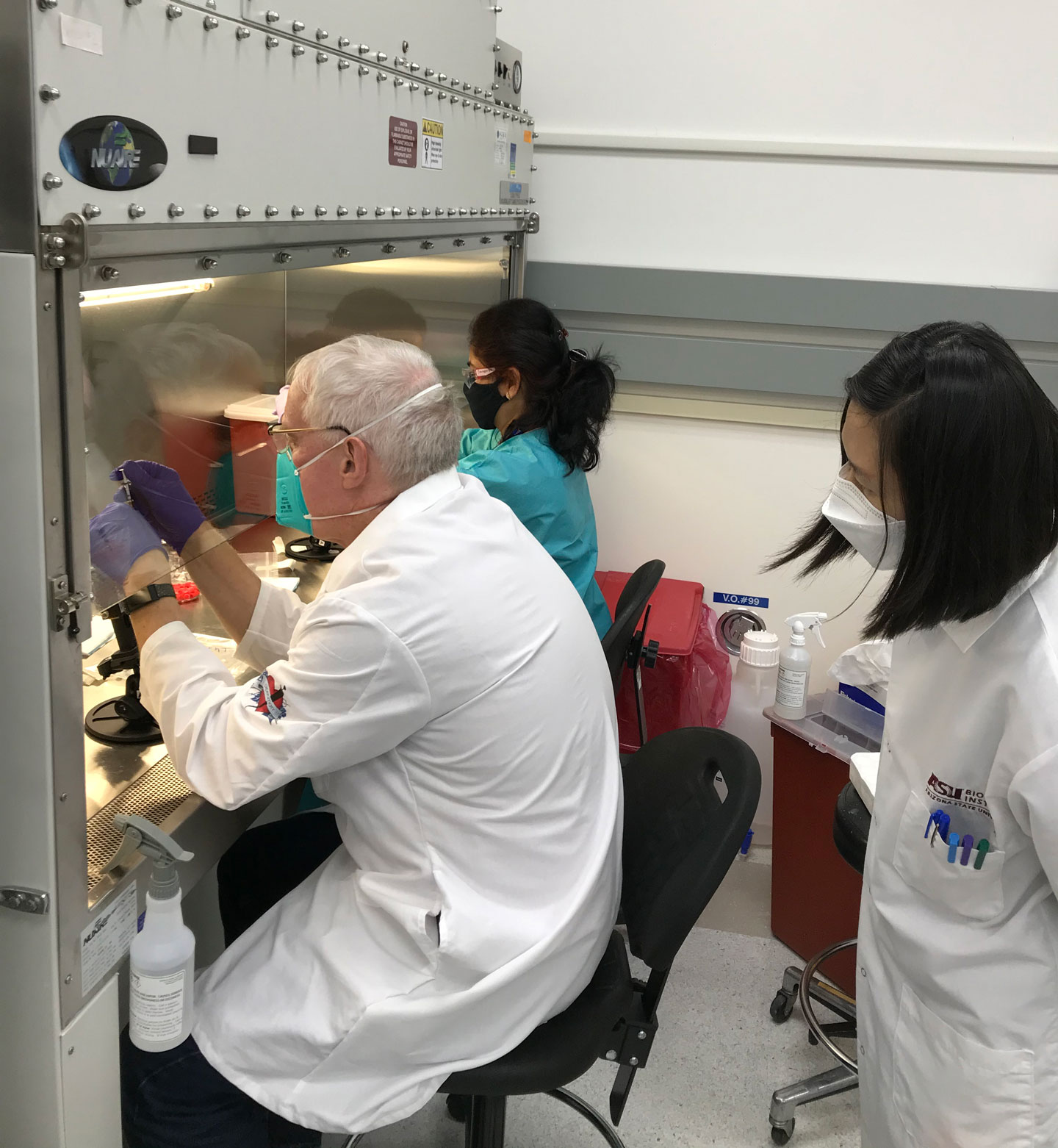
Bob McLean helps with spaceflight inoculation at KSC. Two team members assist from Arizona State University (Jiseon Yang standing, and Sandhya Gangaraju sitting).
Preparing for the Spaceflight Experiment with Confocal Microscopy
To prep for the spaceflight experiment, Bob and his team used an Olympus FV1000 confocal laser scanning microscope and a 60X water immersion objective at Texas State to capture 3D images of bacterial biofilms on flight hardware relevant to the ISS water system.
These images enabled them to identify the biofilm location, bacterial populations, and structure on hydrated biofilms. The bacteria were easy to distinguish using confocal microscopy because they contained genes for fluorescent proteins.
For instance, the Pseudomonas aeruginosa contained green fluorescent protein (GFP) and Escherichia coli contained mCherry. You can see the distinct green and red colors in the images below:
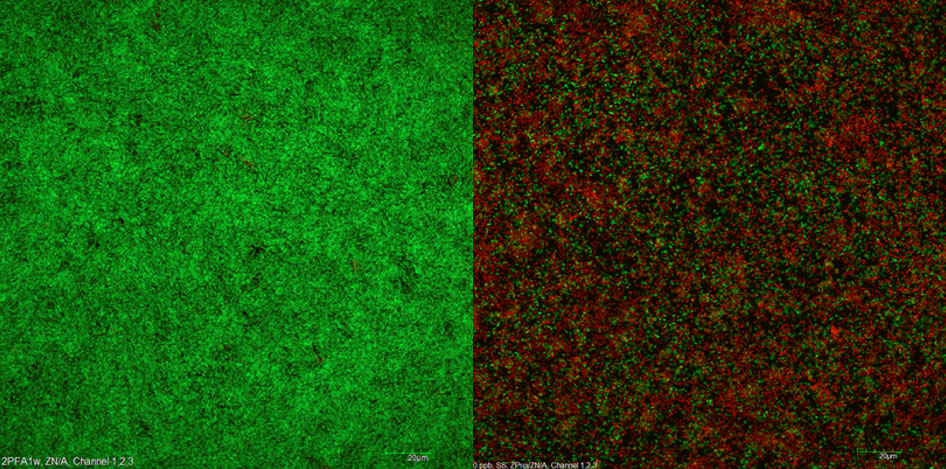
Confocal images of biofilms on flight hardware. Left: Biofilms (Pseudomonas aeruginosa, green) on Teflon. Right: Biofilms (Escherichia coli, red and Pseudomonas aeruginosa, green) on stainless steel.
This experimental data led to an important milestone: NASA authorizing the flight experiment that flew on SpaceX CRS-21. Today, they continue to use an Olympus confocal microscope at Texas State to perform further research for the biofilm experiment and other projects.
The Benefits of Using Confocal Laser Scanning Microscopes for Biofilm Research
Bob and his team at Texas State have now upgraded to an FV3000 confocal laser scanning microscope. Alissa Savage, who manages Texas State’s core facility—the Analysis Research Service Center (ARSC), explained why she likes using the Olympus confocal microscope.
Alissa said, “There are two major aspects. There’s the ease of use. And I can say that going from the FV1000 to the FV3000, it is much more user friendly, which is fantastic. Also, the availability of the technicians to help whenever there is a question and anything with research. Those two things are what stand out for me with Olympus versus some of the competitors.”
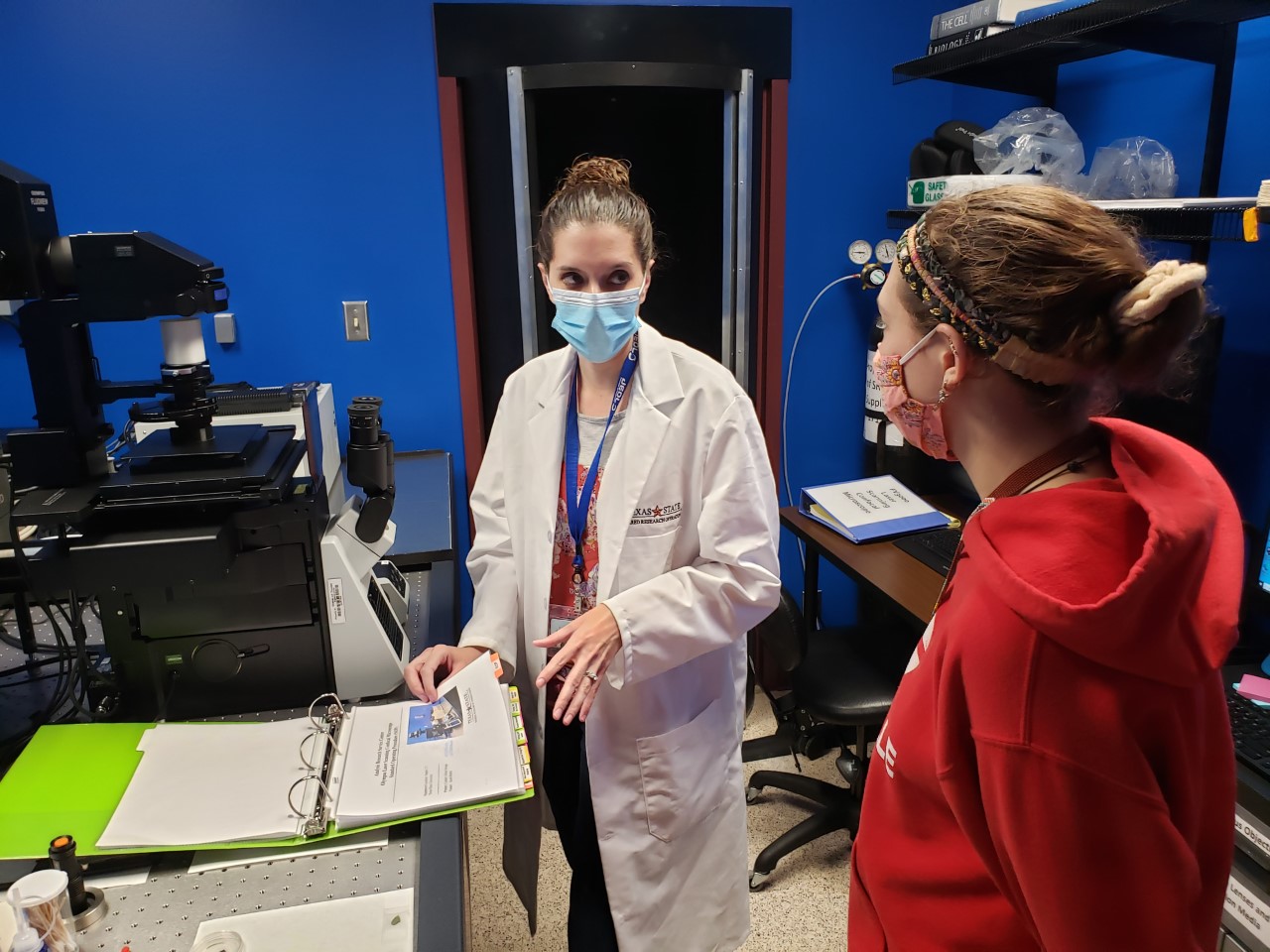
Alissa Savage trains a new user on the FV3000 confocal laser scanning microscope
Bob highlighted why confocal imaging was vital for their biofilm research.
“While electron microscopy would give much higher resolution, the advantage of confocal is that you can look at hydrated and even living materials and not get dehydration artifacts due to the high vacuum requirements for transmission electron microscopy and scanning electron microscopy.”
“It works wonderfully with our samples,” he added.
Related Content
From Astronomy to Microscopy: The Voyage to TruSpectral Technology
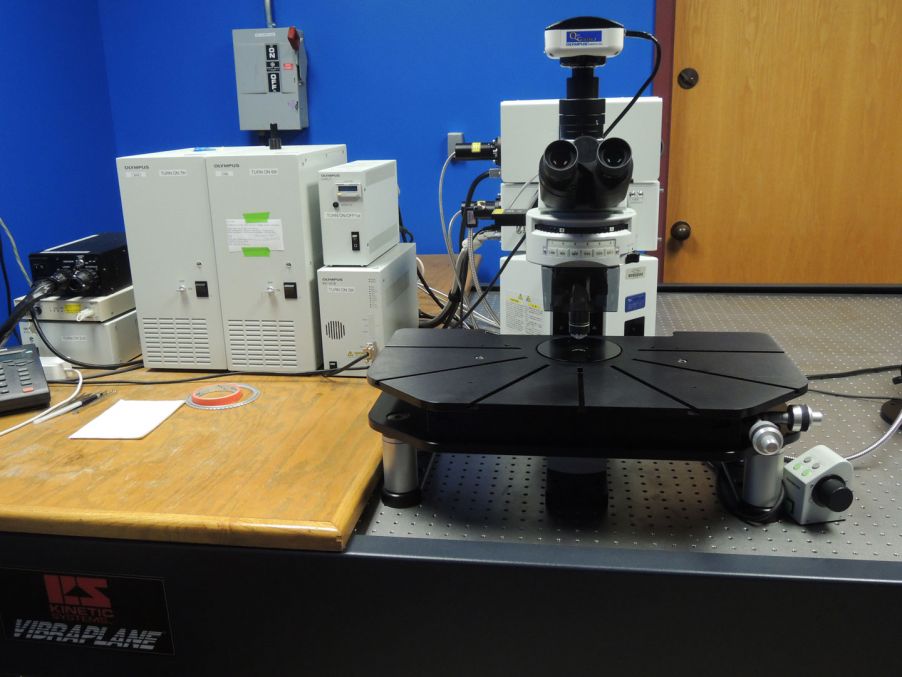

.jpg?rev=6AF1)